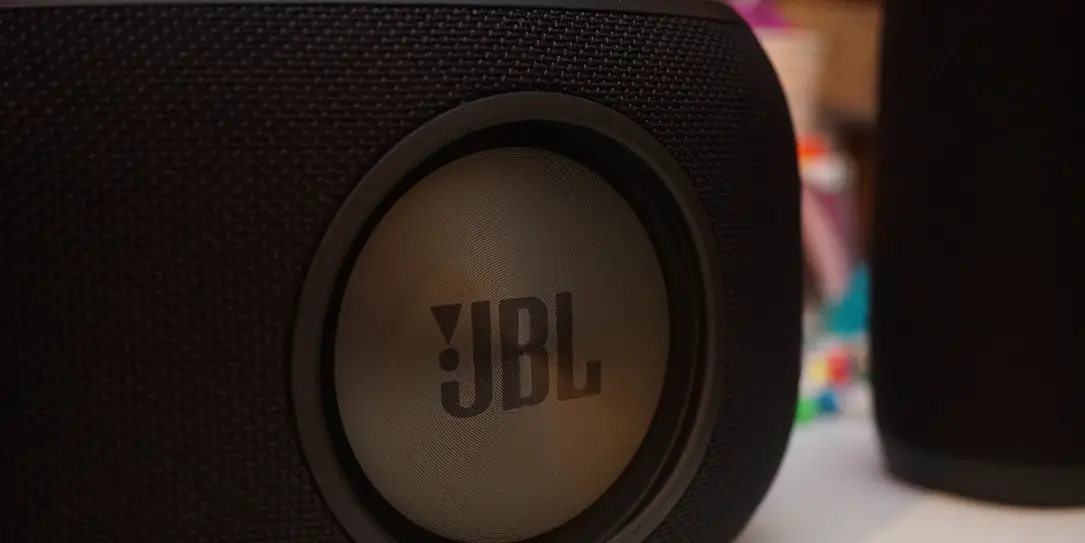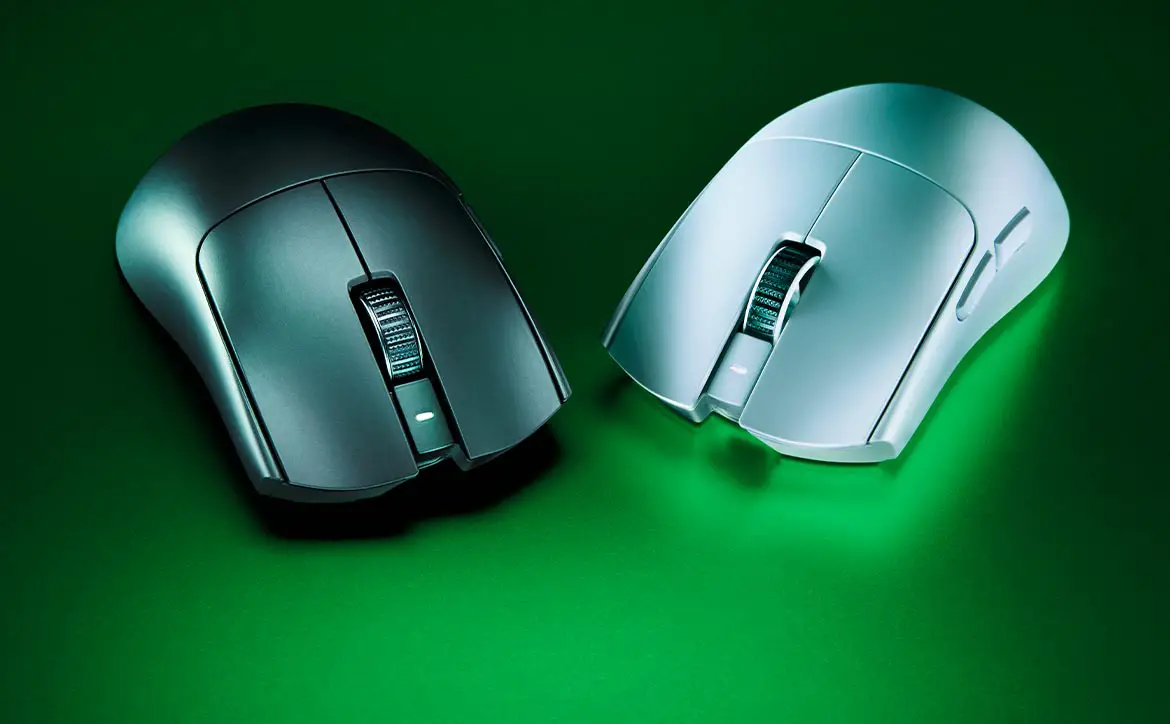 We’re freshly back from CES 2018 where the theme was voice assisted devices. Honoring that theme we’re kicking off 2018 with a review of the JBL Link family of speakers. The Link family includes the 10, 20, 300, and 500 series. We will be covering everything but the 500, which is JBL’s higher-end model in the family. The JBL Link family all have integrated Google Assistant control which is where 2018 is heading. Read on and find out if the Link family of speakers is worth your time and if you should consider them as a purchase.
We’re freshly back from CES 2018 where the theme was voice assisted devices. Honoring that theme we’re kicking off 2018 with a review of the JBL Link family of speakers. The Link family includes the 10, 20, 300, and 500 series. We will be covering everything but the 500, which is JBL’s higher-end model in the family. The JBL Link family all have integrated Google Assistant control which is where 2018 is heading. Read on and find out if the Link family of speakers is worth your time and if you should consider them as a purchase.
Specifications
The JBL Link family of speakers has the following features and specifications:
JBL Link 10
- Transducer: 2 x45mm
- Output Power: 2 x8W
- Frequency Response: 65Hz-20kHz
- Signal-to-noise ratio: >80dB
- Wireless network: 802.11b/g/n/ac (2.4/5GHz)
- Bluetooth version: 4.2
- Supported audio formats: HE-AAC, LC-AAC, MP3, Vorbis, WAV (LPCM), FLAC, Opus
- Battery: 4,000mAh up to 5 hours of music playback
- Dimensions: 86mm x 169mm
- Weight: 670g
- IPX7 waterproof
JBL Link 20
- Transducer: 2 x50mm
- Output Power: 2 x10W
- Frequency Response: 65Hz-20kHz
- Signal-to-noise ratio: >80dB
- Wireless network: 802.11b/g/n/ac (2.4/5GHz)
- Bluetooth version: 4.2
- Supported audio formats: HE-AAC, LC-AAC, MP3, Vorbis, WAV (LPCM), FLAC, Opus
- Battery: 4,000mAh up to 10 hours of music playback
- Dimensions: 93mm x 210mm
- Weight: 950g
- IPX7 waterproof
JBL Link 300
- Transducer: 1 x89mm woofer, 1x 20mm tweeter
- Output Power: 2 x25W
- Frequency Response: 55Hz–22kHz (-6dB)
- Signal-to-noise ratio: >80dB
- Wireless network: 802.11b/g/n/ac (2.4/5GHz)
- Bluetooth version: 4.2
- Supported audio formats: HE-AAC, LC-AAC, MP3, Vorbis, WAV (LPCM), FLAC, Opus
- Power: 19VDC, 3.0A no battery power
- Dimensions: 236mm x 134mm x 154mm
- Weight: 1.7kg
What’s In The Box
- JBL Link speakers
- Wall wort (JBL Link 10/20 only)
- USB-A to MicroUSB cable (JBL Link 10/20 only)
- Power cable and adapter (JBL Link 300 only)
- Instructions, warranty, and documentation
Design
All 3 of the Link models we have are similarly styled. JBL didn’t stray far from their current designs which I thought was the safe route to take. I wish they would have been a bit more creative with this line, perhaps to separate it further from their existing speaker designs. The ho-hum design isn’t a deal breaker by any means, it’s still appealing in a familiar way.
All three models are of a solid build quality. The materials used do feel nice and premium and nothing looks or feels cheaply made. The Link 10 and 20 are both fairly lightweight but still feel solid in the hand. The Link 300 has some girth and weight to it thanks to the ample subwoofer included. In terms of quality, these are all at the top of their game.
The JBL Link 10 and 20 are similarly styled with basically the same button placements. Both are cylindrical with a mesh-type covering and solid top and bottom. The power button and microphone mute button are on the back of both of these units along with the battery level indicator. At the bottom back of both the 10 and 20 is the MicroUSB charging port. At the top of both units, you’ll find the Google Assistant button, volume/track buttons, play/pause button and Bluetooth/pairing button. There are also LED indicators at the top front for volume and at the bottom front for Wi-Fi connectivity.
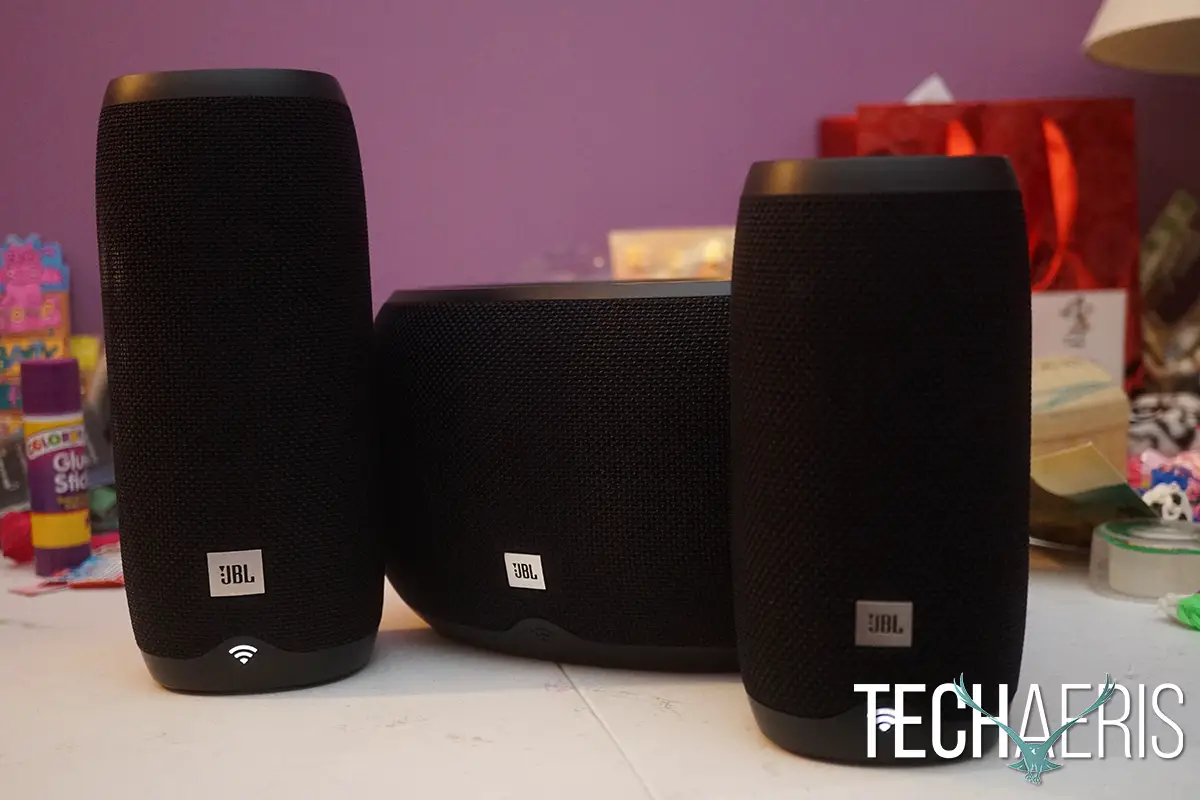
The JBL Link 300 is the larger of these three units and does not run on battery but has a dedicated power supply. The materials used are all identical as the 10 and 20 just more of them. At the bottom of the 300 is the power port, service button, and reset button. Around the back is the 89mm subwoofer which is more than capable. At the top of the unit you’ll find the Google Assistant button, Bluetooth/pairing button, microphone mute button, volume/track buttons, and play/pause button. The 300 also has the LED indicators for the volume and Wi-Fi like its smaller siblings.
Overall these designs are familiar but a bit ho-hum in their looks. They’re very well built and all three feel premium and solid in the hand.
Ease of Use
All three of the Link speakers can be used via Bluetooth but if you want to take advantage of the Google Assistant, you’ll need to connect to Wi-Fi. Bluetooth setup is a breeze, just push the Bluetooth button for a few seconds to get into pairing mode. Open your device and look for the Link product in Bluetooth settings.
Setting up Wi-Fi to use Google Assistant is just as easy. Once you power on any of the devices, Google Assistant will prompt you to download and install the Google Home app. Once you have that installed, you will open the app and you should see a new device that needs to be set up. Follow the prompts and allow whatever permissions you want and you’ll be ready to go in minutes. You can use all three devices via Wi-Fi or Bluetooth. For example, if you’re using Apple Music, you will not be able to use Google Assistant to access this content, but you can connect via Bluetooth to play music.
One really nice feature that you’ll need to set up before you can use is linking these speakers together. You’ll need to create a group in the Google Home app and add the speakers you want to it in order to use this feature. Once you have that group setup, you can tell Google. “Hey Google. Play Pink Floyd on all speakers.” Music will then come from the group of speakers you’ve linked together.
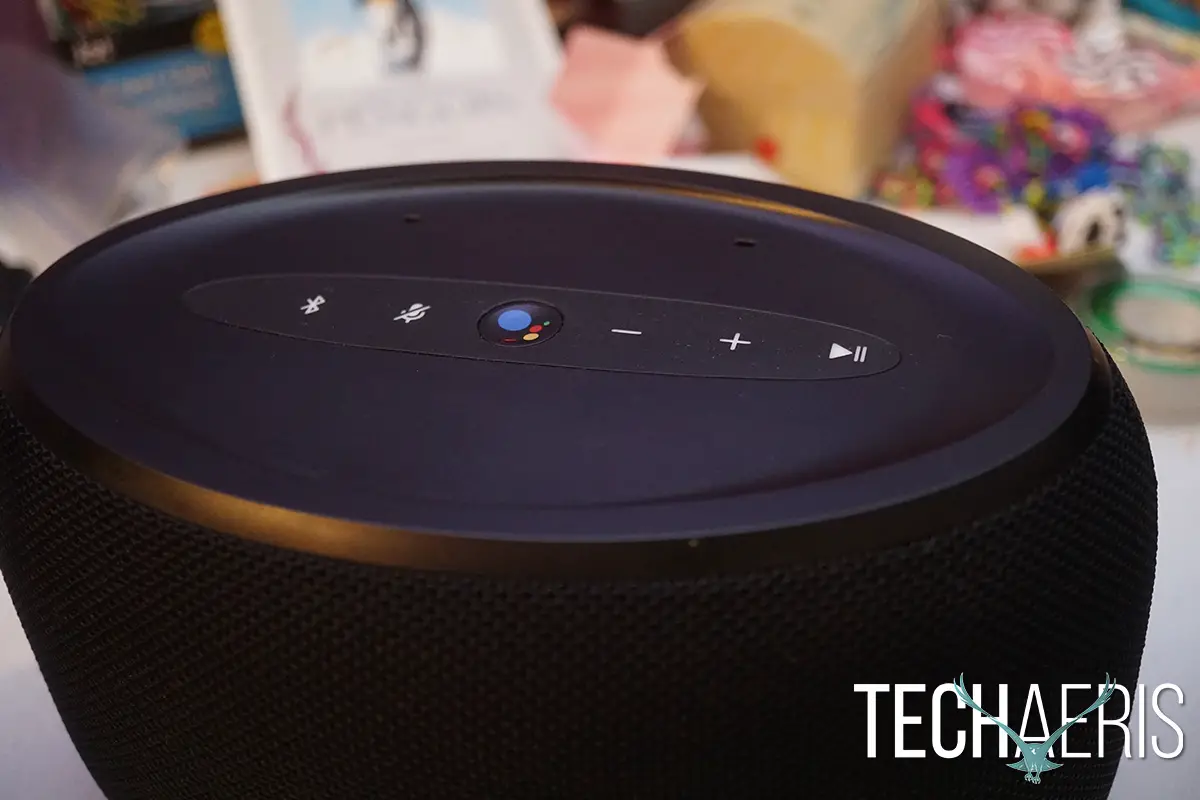
Alternately, you can play different music from each different speaker but you’ll need to be sure to tell Google which speaker you want music to come from. For example. My speakers are front bed, back bed, and kitchen. If I wanted to listen to Coldplay in the front bedroom then I’d say, “Hey Google. Play Coldplay on front bed.” Very simple to use once you’re familiar with the commands and have it all set up in the app.
Overall, all three Link devices are simple to set up via Bluetooth or the Google Home app.
Google Assistant
The main selling point of all the Link speakers is Google Assistant. If you’ve always wanted to try an Alexa device but live in the Google ecosystem, then here’s your chance. Google Assistant is ever evolving and can be used for everything from simple web searches to controlling other smart home devices. If you have a Spotify, Pandora, or Google Play Music account, you can stream music just by asking the Assistant to play music. You will need to link your accounts to the Google Home app and the app will ask you to set a preferred music source. You cannot stream Apple Music from the Google Home app, this can be done via Bluetooth though.
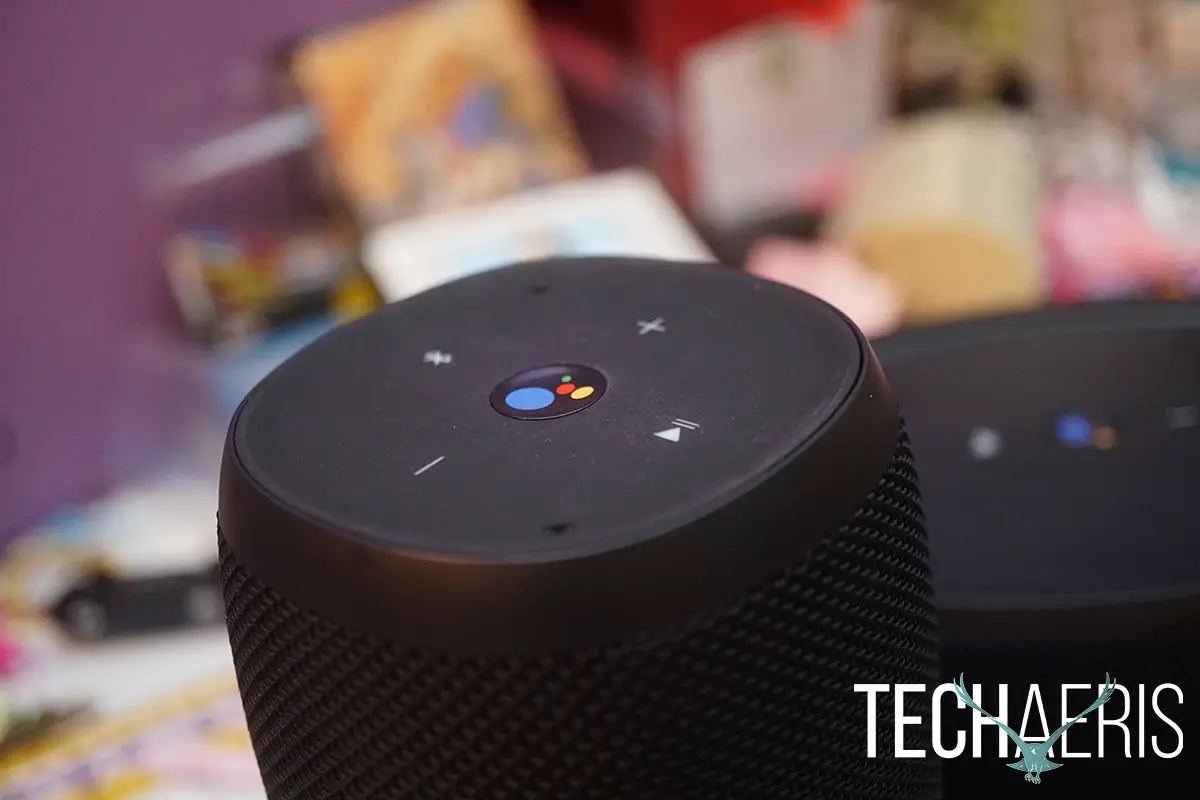
Once you have everything setup in the Home app you can start using the Assistant features on your JBL Link speaker. For most people, that will mean streaming music from their Google Play Music account but if you have a Chromecast, you can also use the speaker to cast to your TV as well. If you have a myriad of smart products such as a Nest, Philips Hue, LG smart appliances, WeMo switches, and more. You will be able to control all of these smart devices from your Link speaker. Simply say something like…”Hey Google. Turn off my WeMo light.” Or another example would be…”Hey Google. Set the temperature of my Nest to 73 degrees.”
Once you have all your devices registered in the Google Home app, you will have complete control of them by using the speaker. Overall, I thought Assistant worked well here. I do wish there was support for Apple Music but that is entirely on Apple’s head as they will likely not give up anything to Google. You can see all of the things that Google Assistant can do by visiting Google’s Assistant homepage.
https://youtu.be/VZ9MBYfu_0A
Sound
I generally have a high regard for JBL’s soundstage and have enjoyed most of the products I’ve personally reviewed. I’m happy to report the JBL Link family of speakers falls into the thumbs up side for sound. All of the speakers have a rich and vibrant soundstage with a slight emphasis on the low end. The bass isn’t overpowering but it stands out, especially on the 300.
The mids are balanced as are the highs and I did notice that the Link 10 didn’t sound that much different from the Link 20. The 20 may handle higher volumes better but the overall sound coming from both is nearly identical. If you’re not planning on cranking the volume to crazy levels, it may be worth saving a few bucks to get the Link 10 over the Link 20. Although the 20 does offer twice the battery life, another thing to consider.
The Link 300 is where the rich and full sound is though. While the 10 and 20 do a fairly good job of handling a room, the 300 really fills up a room well. My guess is, the 300 should compete with the Google Home Max but at a lower price.
Overall, I found the sound from all of these speakers matched the price points of each. The 300 stood out as the top of the heap in terms of sound and probably the best bang for your back out of all of them.
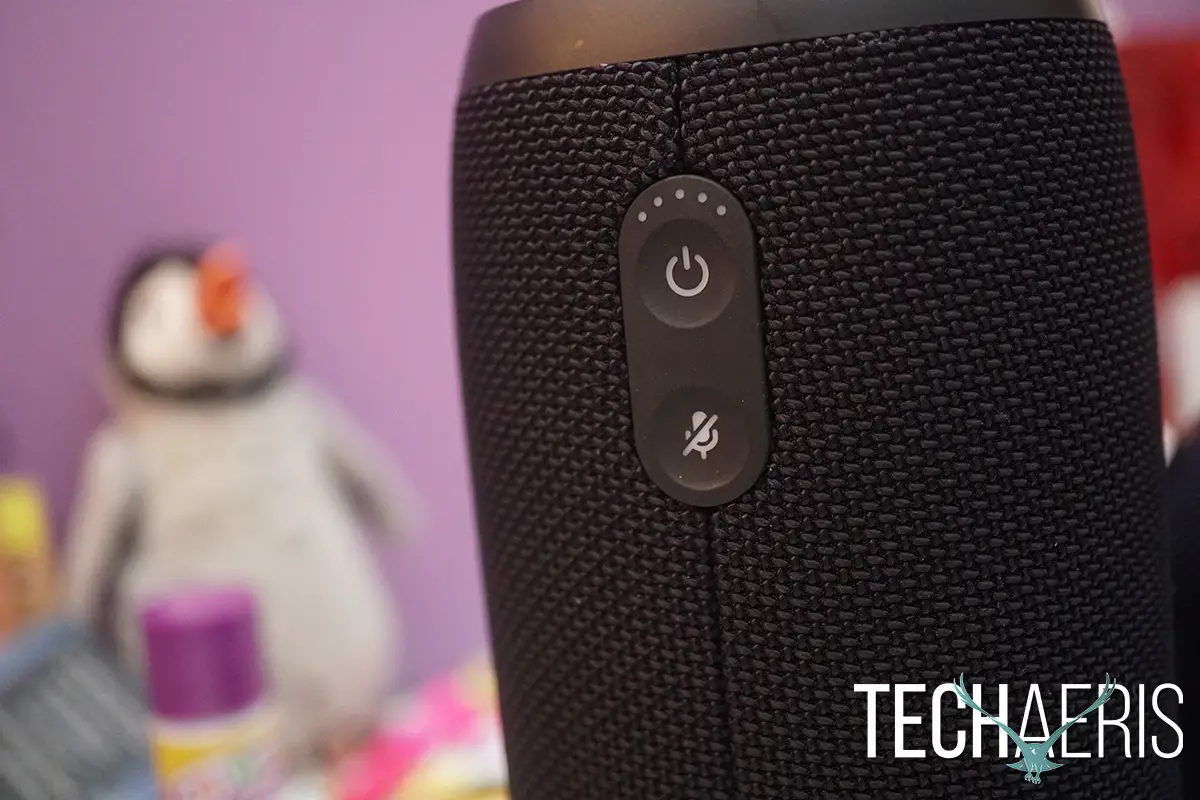
Reception/Call Quality
Wi-Fi reception will depend on your network but should generally be solid. Bluetooth reception from your phone will depend on distance and obstacles. It’s pretty standard at 30-40 feet which is expected. Google Assistant can’t make phone calls or send text messages from these speakers yet but if you’re connected to Bluetooth you can take calls. Call quality is good, most callers could hear me fine and I could hear them very well.
Battery Life
The JBL Link 300 does not offer battery power, it is wall power only. The Link 10 and 20 both offer battery power and promise 5 and 10 hours of music playback respectively. I was able to get just over 5 on the Link 10 and just under 10 on the Link 20 with the volume set at 60% and streaming over Wi-Fi and Bluetooth combined. Overall the battery life is really good. The Link 300 is more for a permanent placement and is too big to be portable anyway.
Price/Value
Pricing for the JBL Link family starts at $149.95USD for the Link 10, $199.95USD for the Link 20, and $249.95USD for the Link 300. All three are priced well and hold their value well.
Wrap Up
If you’re in need of a Google Assistant speaker with portability then both the Link 10 and Link 20 are worth looking at. The Link 20 will give you better battery life but the Link 10 is super portable. The Link 300 is more of a home speaker but delivers the best sound performance and bang for your buck, if you don’t need portability. Honestly, you can’t go wrong with any of these.

